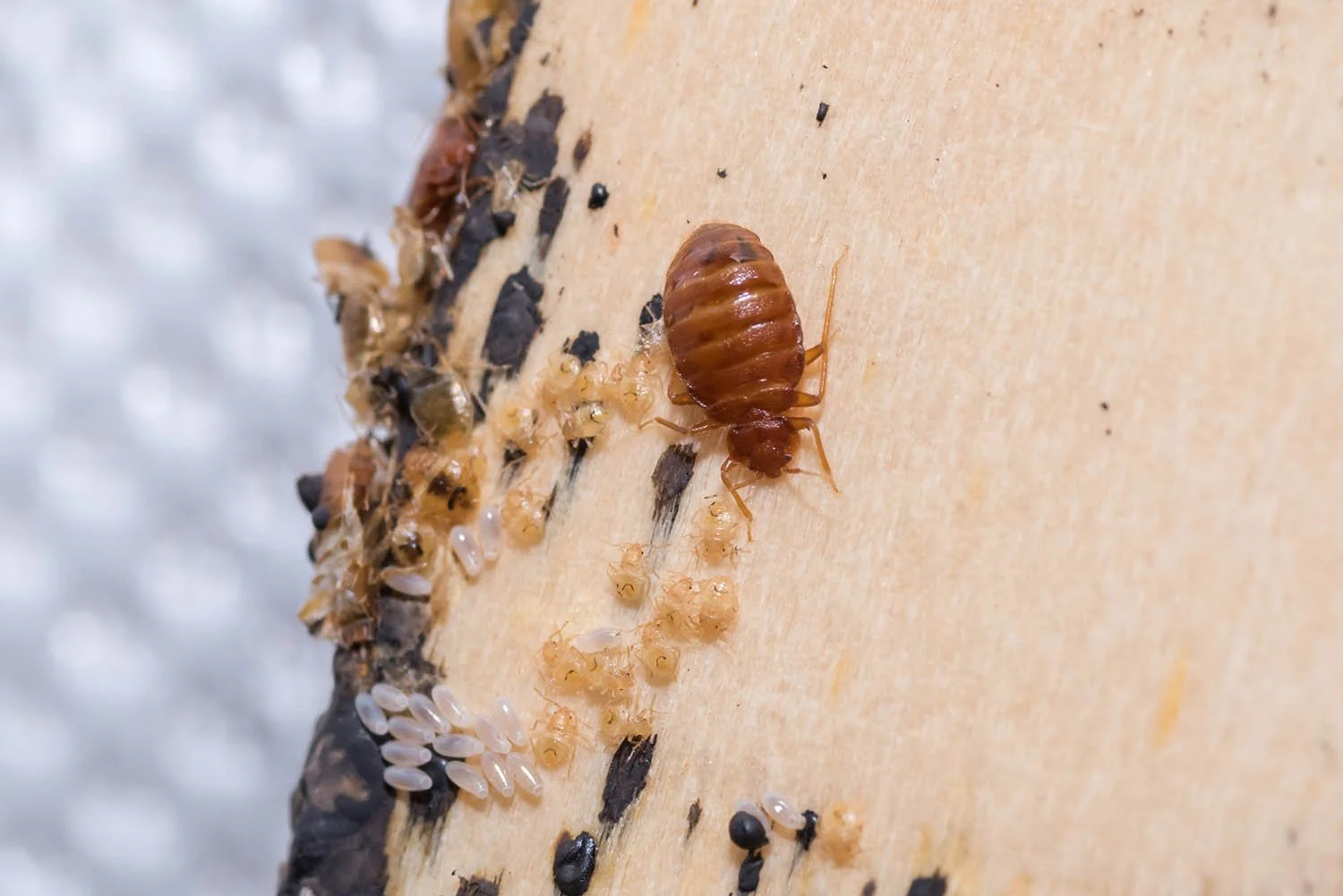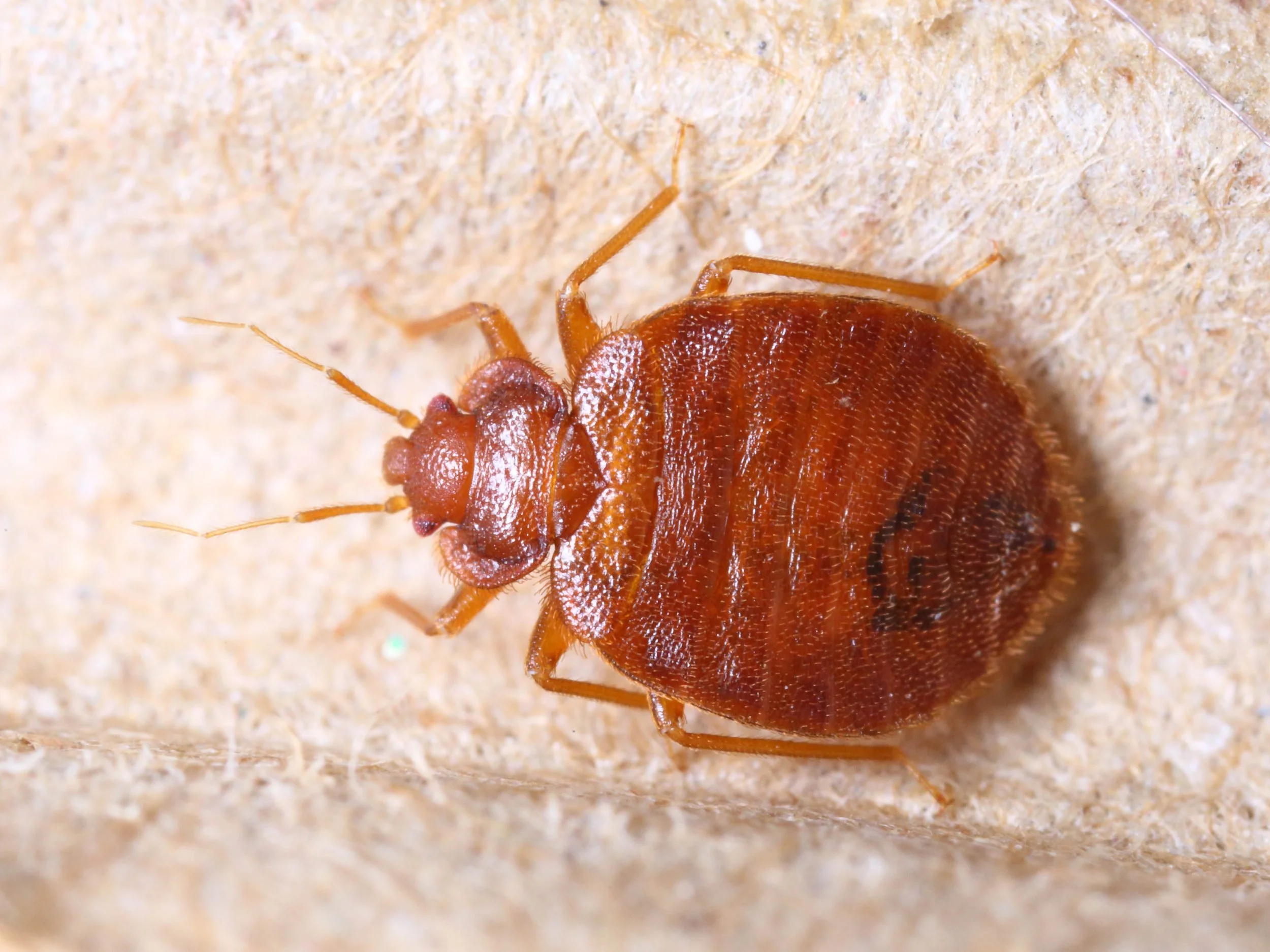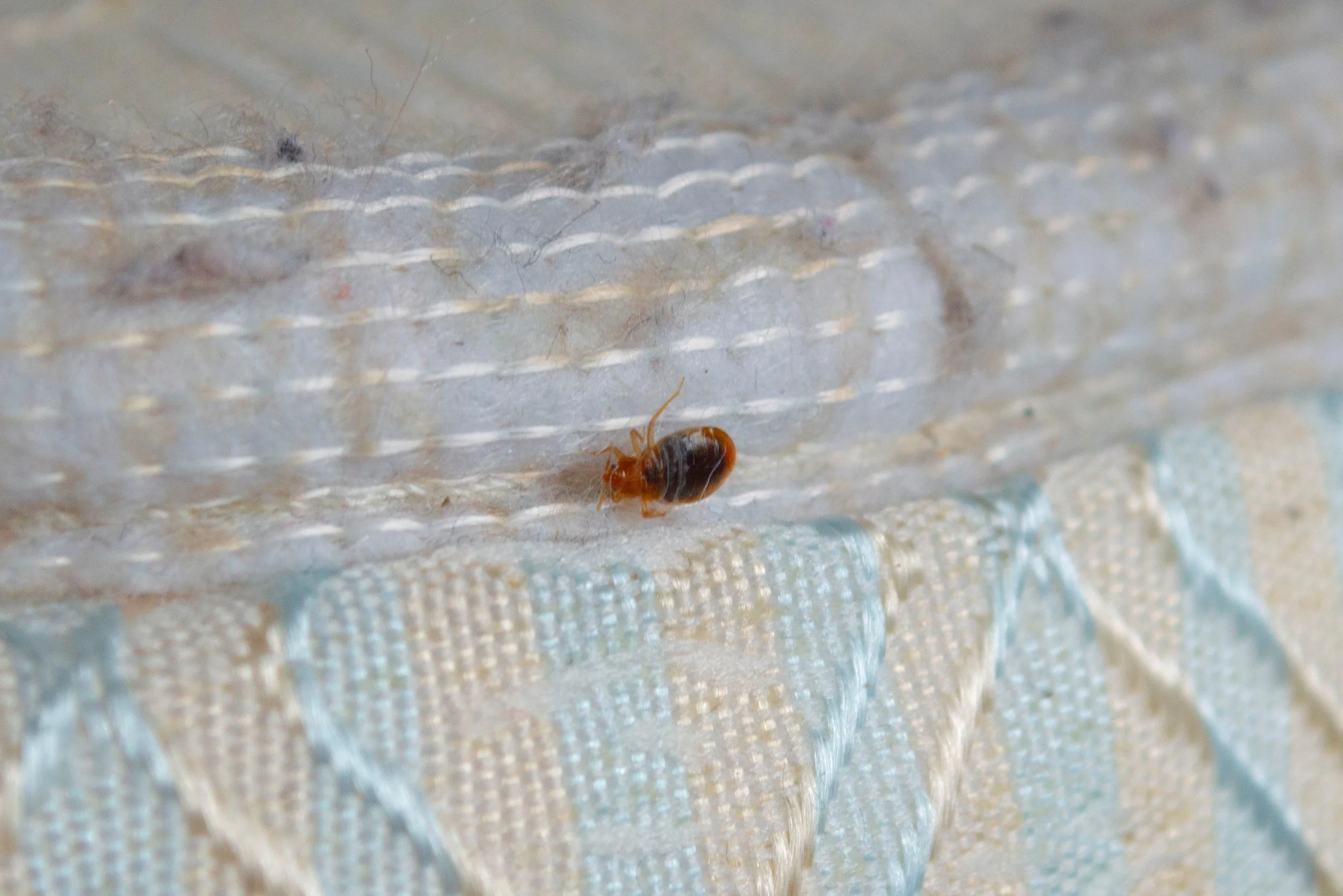Bed Bugs
Bed bugs are small, semi-round, nocturnal parasites that primarily feed on human blood. They are attracted to humans because of our warmth and the carbon dioxide we exhale. Although they do not fly or hop, bed bugs are fast-moving insects and are excellent at hitching rides on our clothes or personal items, such as luggage, and can travel from hotels, movie theaters, and public transport to our homes. Once inside, bed bugs quickly establish infestations, multiplying rapidly.
A single female bed bug can lay 1–5 eggs per day, amounting to around 120 eggs during her lifetime. Within just three weeks, these eggs hatch into nymphs, which grow into fully mature bed bugs, ready to feed. Within a month, a small infestation can explode into hundreds of blood-feeding pests.
Bed bugs are often not noticed until bites or the presence of their eggs or feces is observed.
Despite being largely eradicated in the mid-20th century, bed bugs have made a significant resurgence, partly due to increased international travel and pesticide resistance. In places like California, the bed bug epidemic is on the rise, and these pests are challenging to control and often misunderstood.



Understanding the Bed bug Life Cycle
The life cycle of a bed bug begins when a female lays eggs, usually in hidden crevices. These tiny white eggs hatch in about 6 to 10 days, producing nymphs—immature bed bugs that must feed on blood to grow. A nymph goes through five stages, shedding its skin after each blood meal. In ideal conditions, a bed bug becomes an adult in about 3 to 4 weeks. Once mature, bed bugs reproduce rapidly, making infestations difficult to control without intervention.
-
Eggs:
Laid in cracks and crevices
About 1 mm in size and pearl-white
Hatch in 6–10 days
Nymphs:
Pass through 5 instar stages
Must feed on blood before each molt
Smaller and lighter in color than adults
Take 2–4 weeks to reach adulthood (depending on temperature and food)
Adults:
About 5–7 mm long, reddish-brown
Can live 6 months or more
Females can lay 1–5 eggs daily, up to 500 in a lifetime
Signs of an infestation
A bed bug infestation often starts subtly, but there are several warning signs to watch for. One of the most common indicators is waking up with itchy, red bites, often in lines or clusters, usually on areas exposed while sleeping. You may also notice small blood stains on sheets or dark fecal spots on mattresses, furniture, or walls. In severe cases, you might find shed skins, tiny white eggs, or even the live bugs themselves hiding in mattress seams, cracks, and crevices. A musty odor may also be present in heavily infested rooms.
-
Bites: Often, bed bug bites occur while you are asleep. These bites are usually not felt initially, but they can lead to intense itching and irritation. People with allergies may experience severe reactions, while others might not notice them at all.
Fecal Stains: Bed bugs leave dark, smudge-like stains on sheets, mattresses, and furniture. These stains are from digested blood and are a key sign of an infestation.
Eggs and Shells: Bed bug eggs are tiny, white, and often found in crevices, cracks, and seams. Nymphs shed their exoskeletons as they grow, and these can be found in the same areas.
Musty Odor: A strong, unpleasant odor, similar to coriander, may indicate a large infestation.
How Did I get Bed bugs?
Bed bugs are excellent hitchhikers and can easily make their way into your home through various everyday activities:
-
Luggage: Bed bugs often hide in suitcases and travel bags after hotel stays or trips.
Clothing & Personal Items: They cling to clothes, purses, backpacks, and shoes.
Used Furniture: Secondhand furniture, mattresses, and upholstery may already be infested.
Public Places: They transfer from public transport, movie theaters, laundromats, and waiting areas.
Shared Living Spaces: Bed bugs can migrate between apartments, condos, or hotel rooms through walls, electrical outlets, and ventilation systems.
Visitors: Guests unknowingly bring them in on their belongings.
Health Concerns of Bed Bugs
While bed bugs are not known to transmit diseases, their bites can lead to significant health and psychological issues. Most people experience itchy, red welts that may become infected from scratching. In some cases, individuals develop allergic reactions, ranging from mild irritation to severe inflammation. Beyond physical effects, bed bug infestations can cause anxiety, insomnia, and stress, especially when they persist over time. For some, the emotional toll can be as troubling as the bites themselves.
-
Bites & Skin Reactions
Cause itchy, red welts
May lead to secondary infections from scratching
Appear in clusters or lines on exposed skin
Allergic Reactions
Range from mild irritation to severe swelling
Some individuals may need antihistamines or medical attention
Mental Health Impact
Can trigger anxiety, stress, and insomnia
Persistent infestations may lead to emotional distress
Preventing Bed bugs
To prevent a bed bug infestation, always inspect hotel rooms, keep luggage off beds, and wash clothes on high heat after travel. Avoid used furniture unless it’s been carefully checked. Regularly inspect beds and furniture, and keep your home clean and clutter-free to reduce hiding spots.
-
Inspect Hotels and Travel Luggage: When traveling, check hotel rooms thoroughly, especially around the bed and upholstered furniture. Keep luggage off the floor and bed.
Reduce Clutter: Bed bugs love hiding in cluttered areas, so keeping your home tidy and minimizing piles of clothing or unused furniture can limit hiding spots.
Protect Your Mattress and Box Springs: Mattress encasements can help prevent bed bugs from infesting your bed. These protective covers seal out bed bugs and make it easier to spot them.
Check Second-Hand Furniture: If buying second-hand furniture, thoroughly inspect it before bringing it inside. Look for signs of bed bugs, such as dark spots, eggs, or live insects.


